Olive Perdigon 03/05/2025 Photo Album
I tied a few of these simple flies in 2020 during Covid to kill time while quarantined. I used them infrequently, and like many new patterns they lingered in my fly box, as I opted for tried and true patterns that I had confidence in.
Fast forward to 11/04/2023. If you read this post, you learn that I had an outstanding fall day on the Eagle River, when the olive perdigon delivered superior results for my friend, Dave G. and me. Needless to say, this prompted me to tie a batch, but I must confess that I did not test them to any great extent during 2024. I plan to make amends for this oversight, and as a result I approached my vise and produced five additional olive perdigons. I am confident that if I give them a chance, they will become a new favored fly from my fleece wallet.
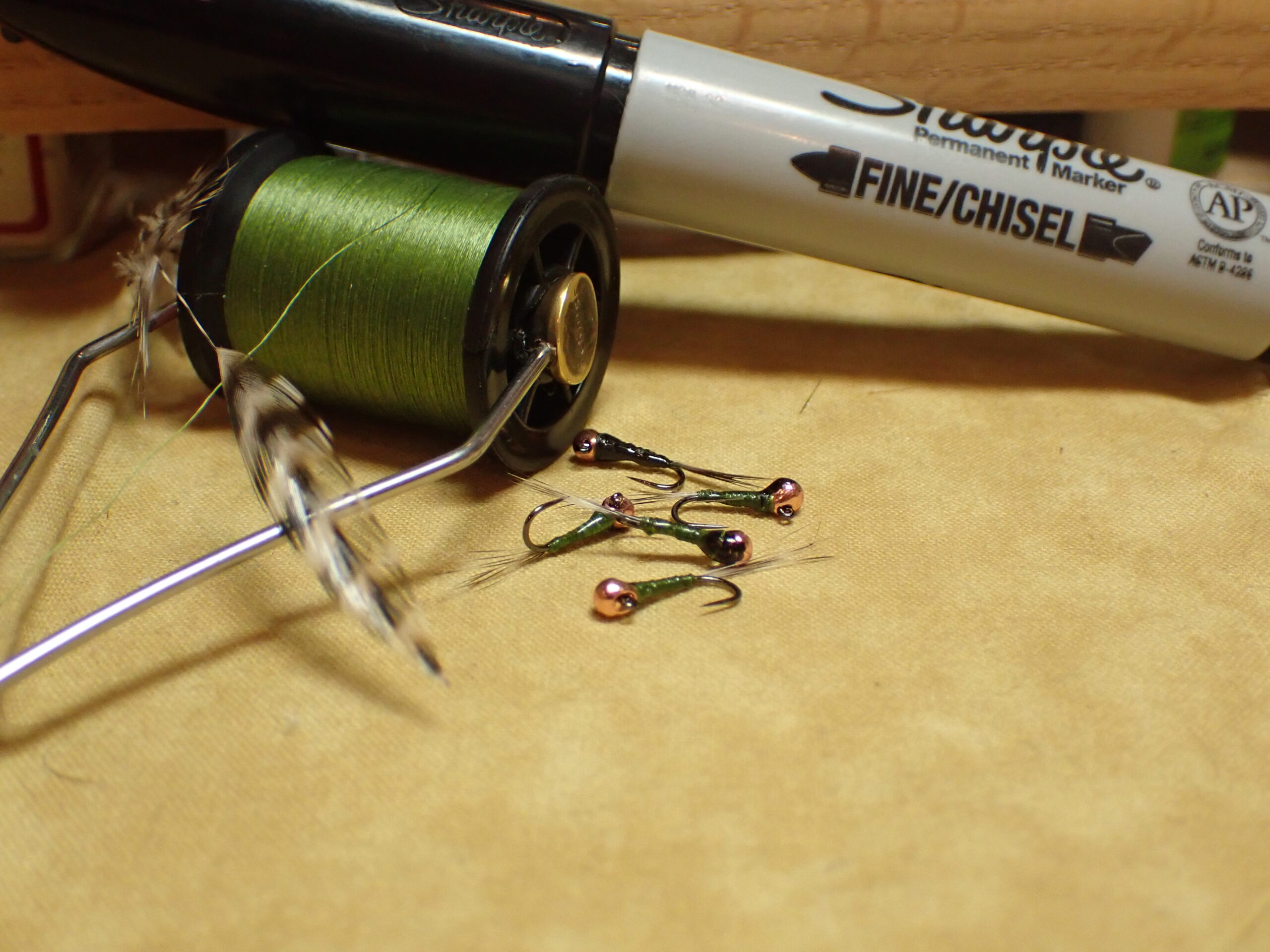 A Batch of Five and Associated Materials
A Batch of Five and Associated Materials
This fly is quite easy to tie, although I am not a fan of messing around with UV resin application. I have squeeze tubes, and the caps become a gooey mess. I plan to switch over to product with applicators, but being a frugal fly tier, I am attempting to use up the resin in my tubes. These olive perdigons require only six materials if you count the hook, bead and a black marker. Otherwise, all you need is some grizzly spade hackle fibers, olive thread and UV resin. The result is a very slender heavy fly that rapidly sinks to the bottom. If I can discipline myself, I would like to test these in pocket water, where it is necessary to get the fly to the bottom quickly. Doesn’t it seem like this is a perfect application for the olive perdigon?

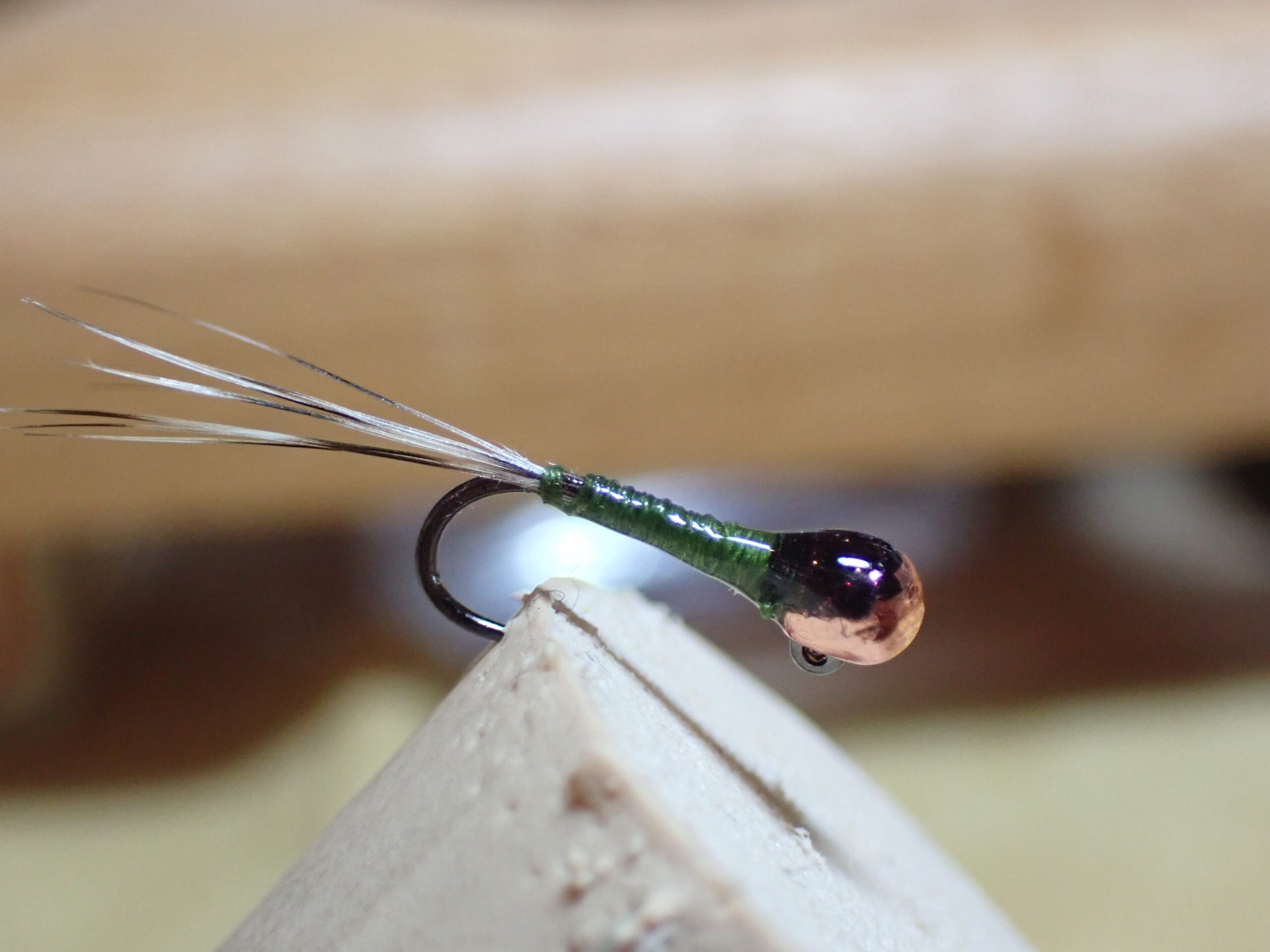 Slender Nymph
Slender Nymph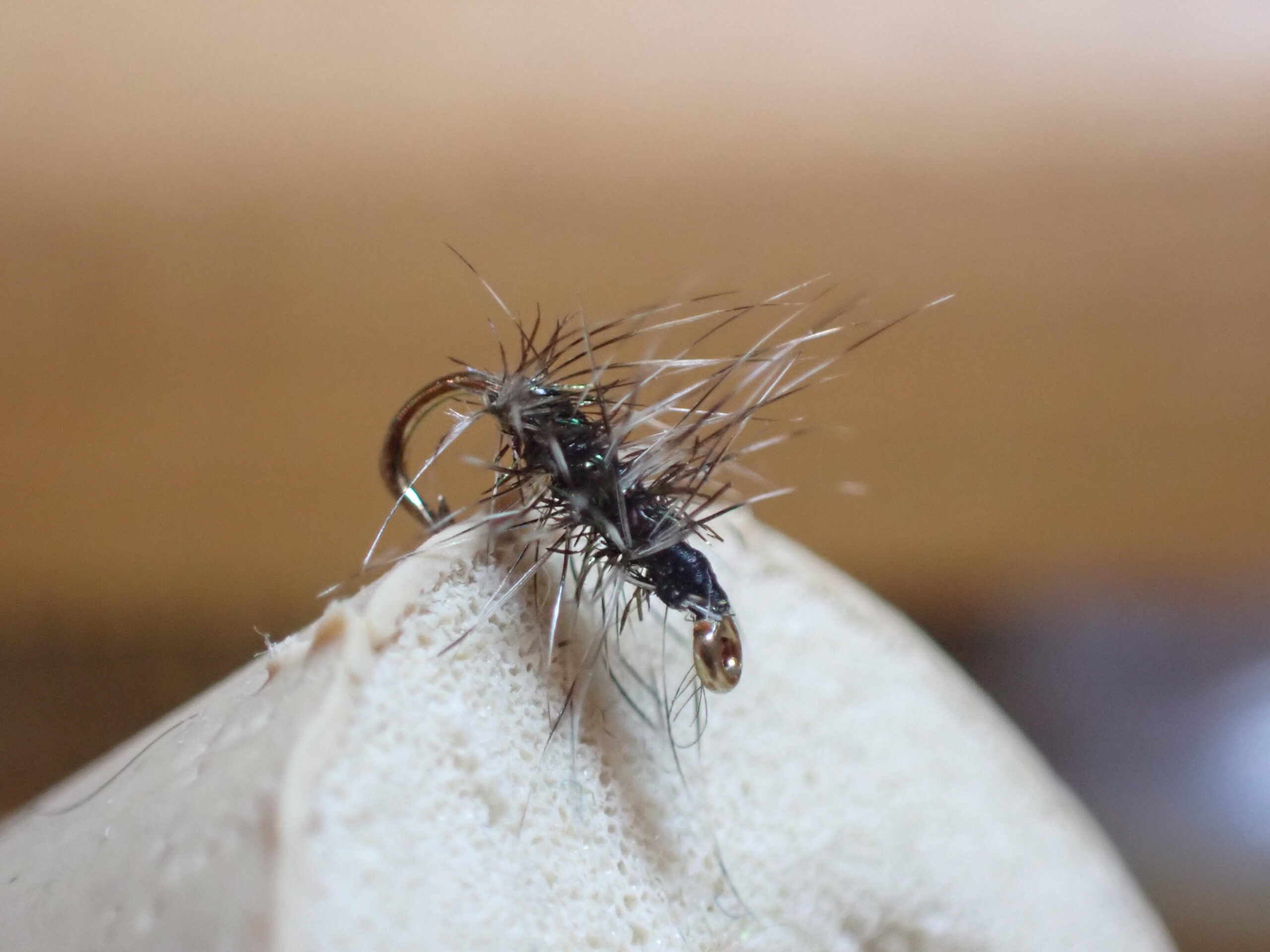 A Model Griffiths Gnat
A Model Griffiths Gnat A Clump of Four
A Clump of Four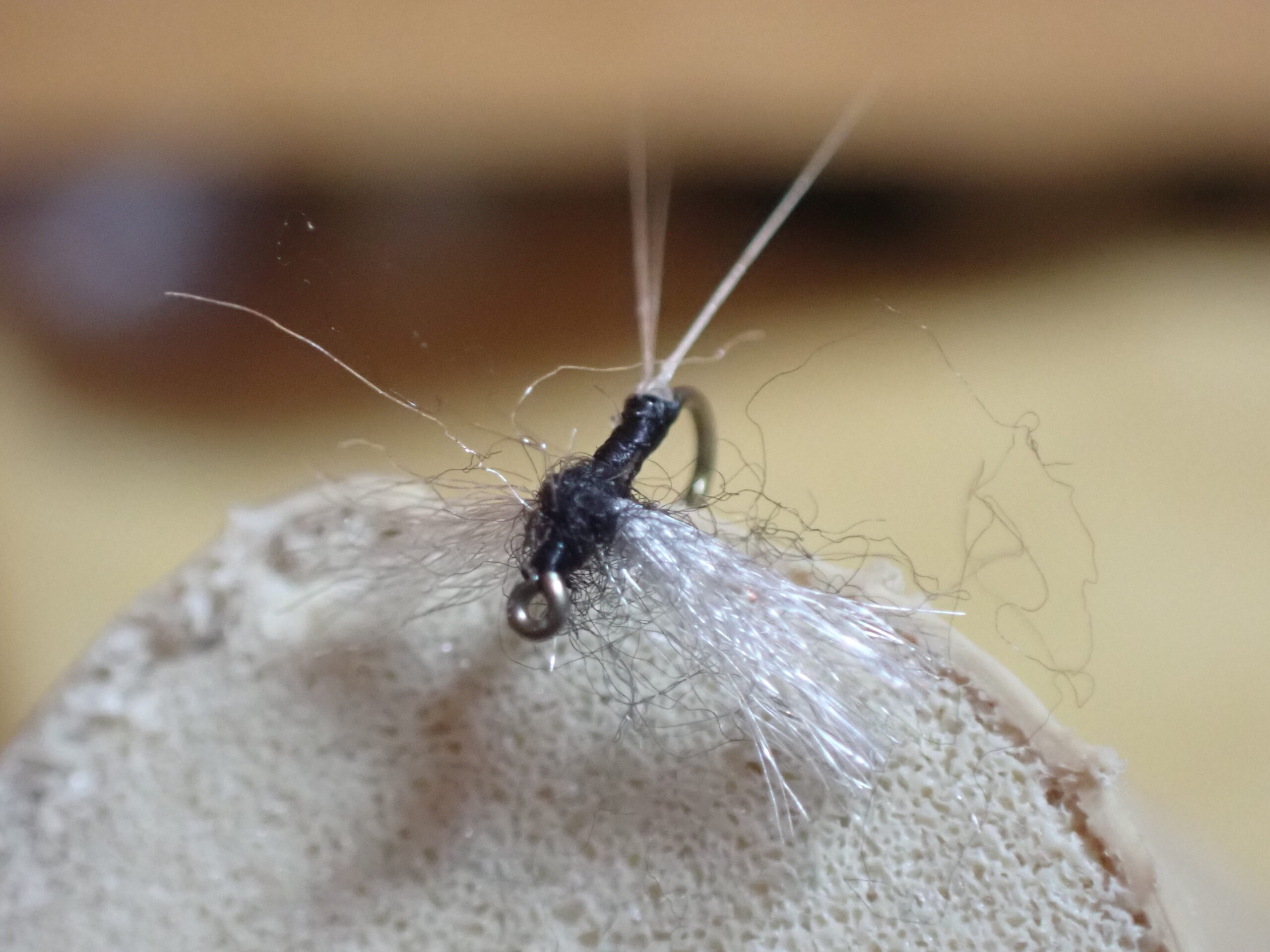 Trico Spinner
Trico Spinner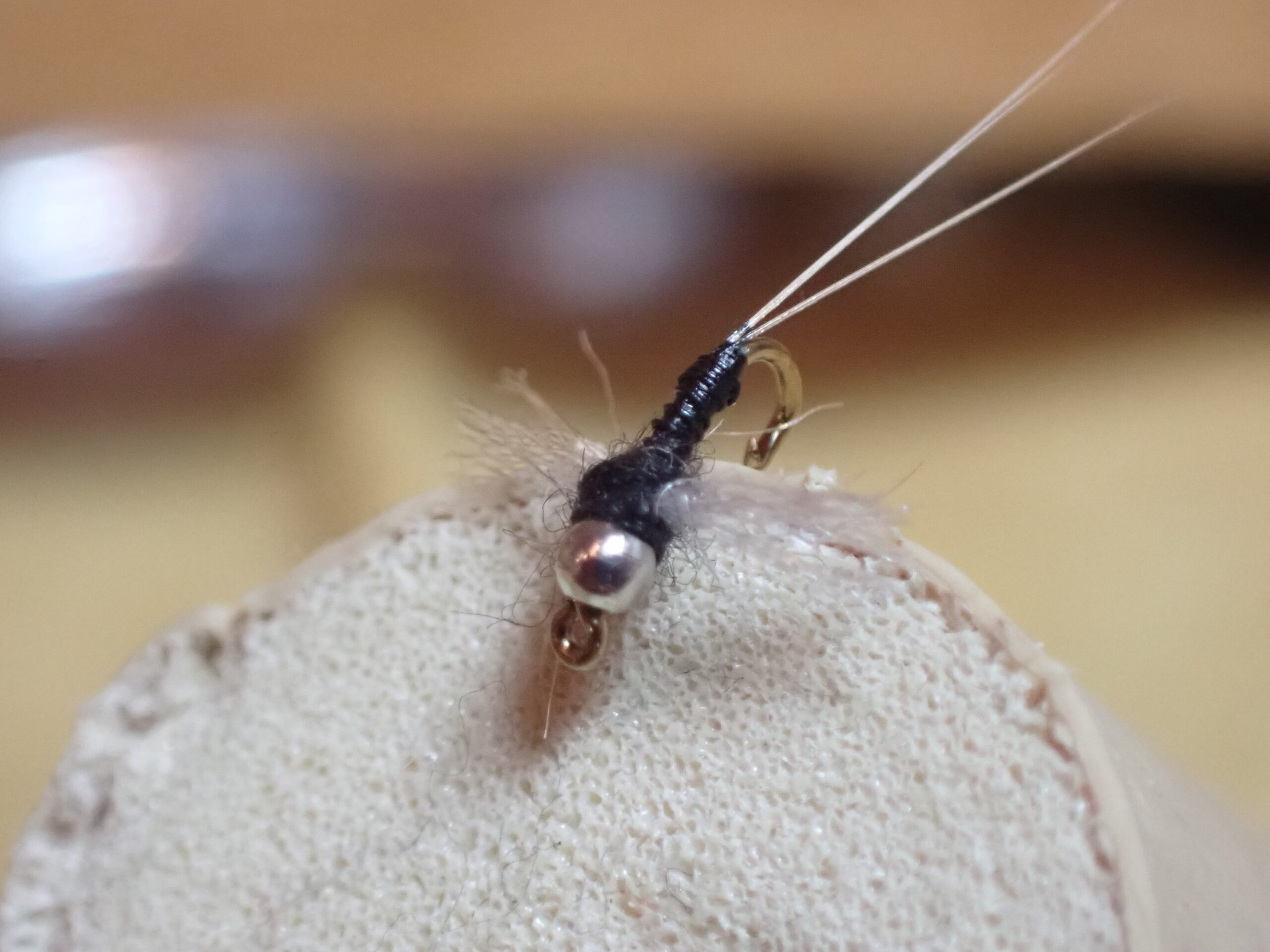 Sunk Trico
Sunk Trico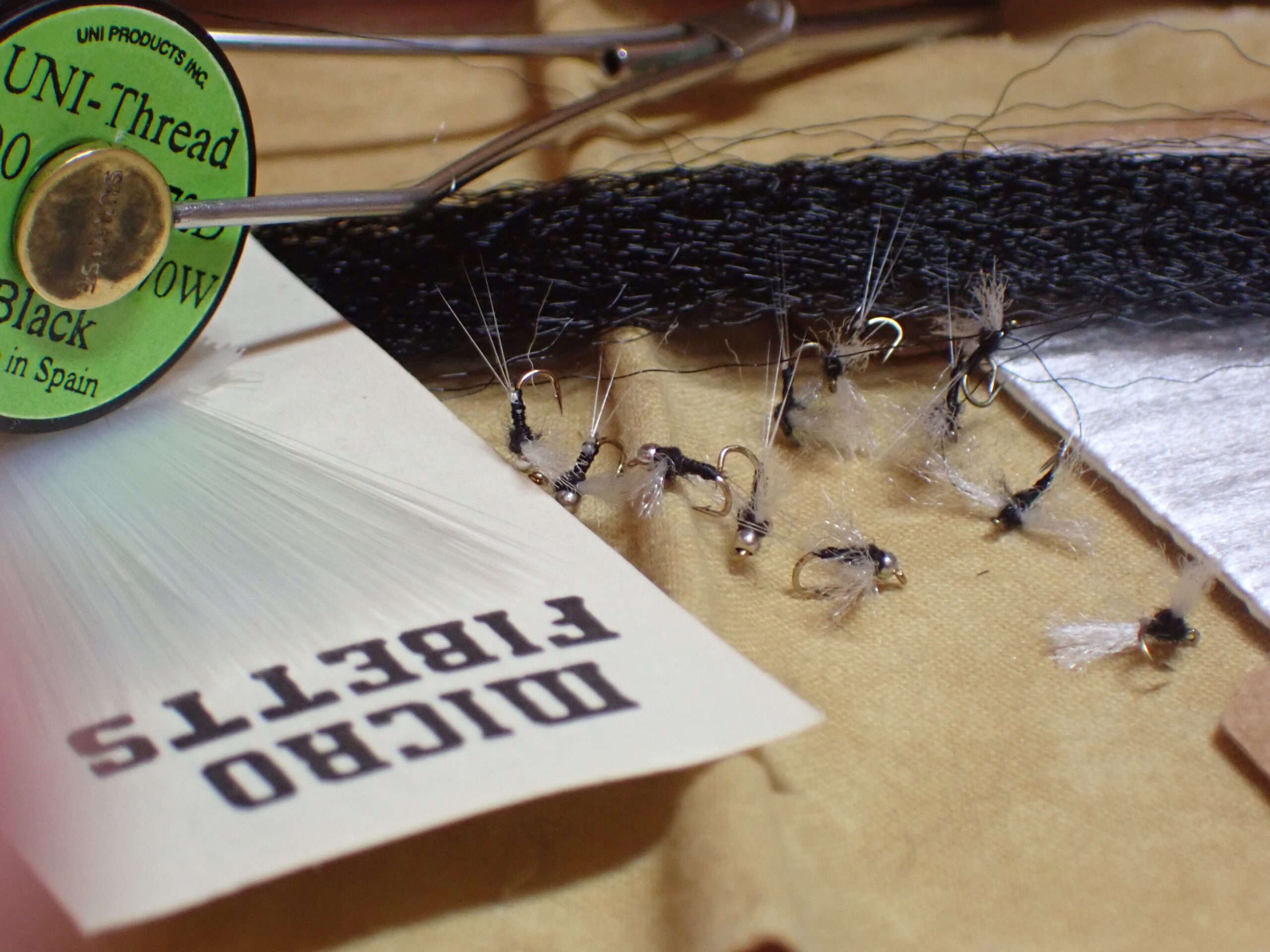 Trico Assortment
Trico Assortment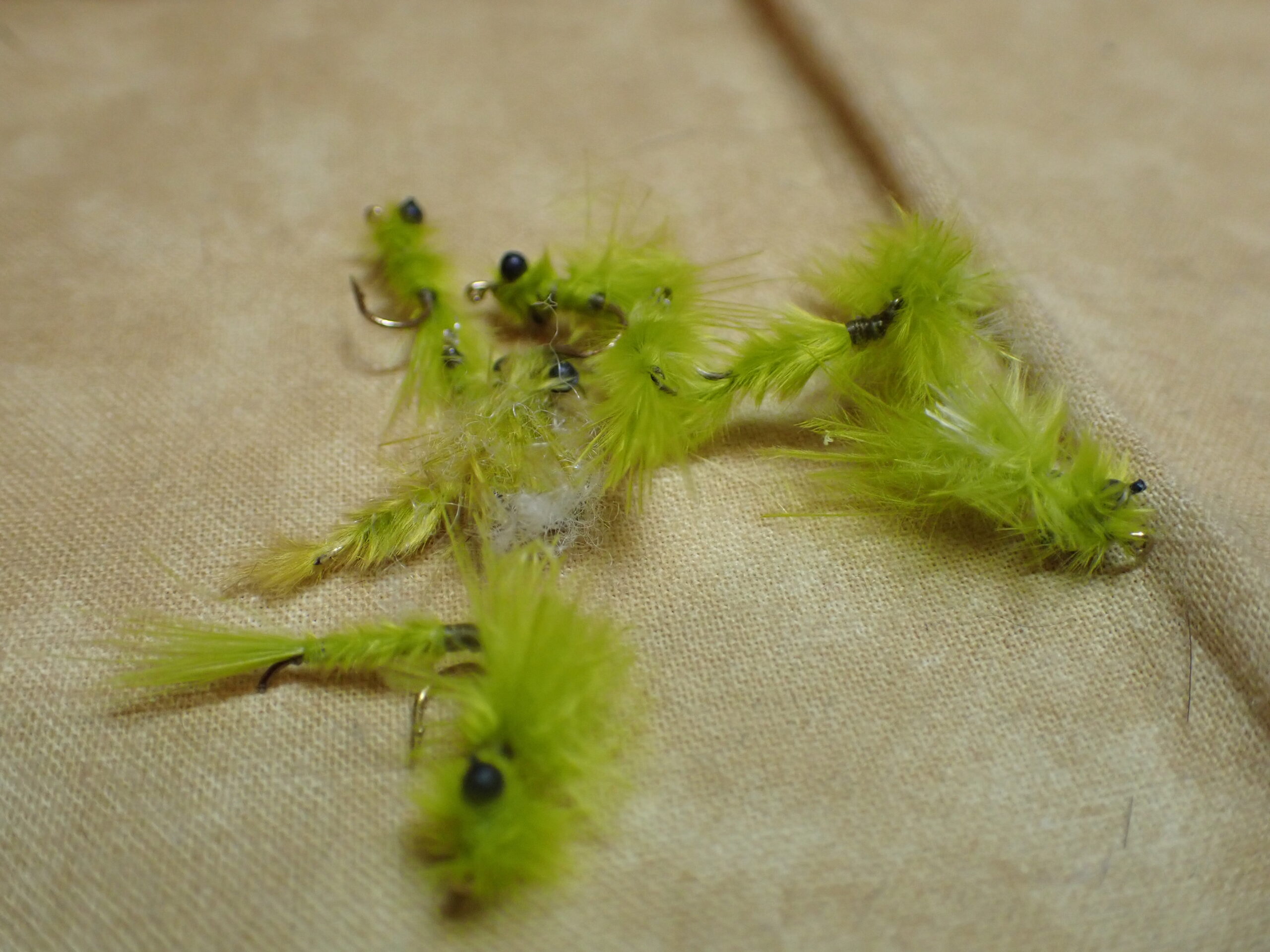 Wiggle Damsels from My Storage Container
Wiggle Damsels from My Storage Container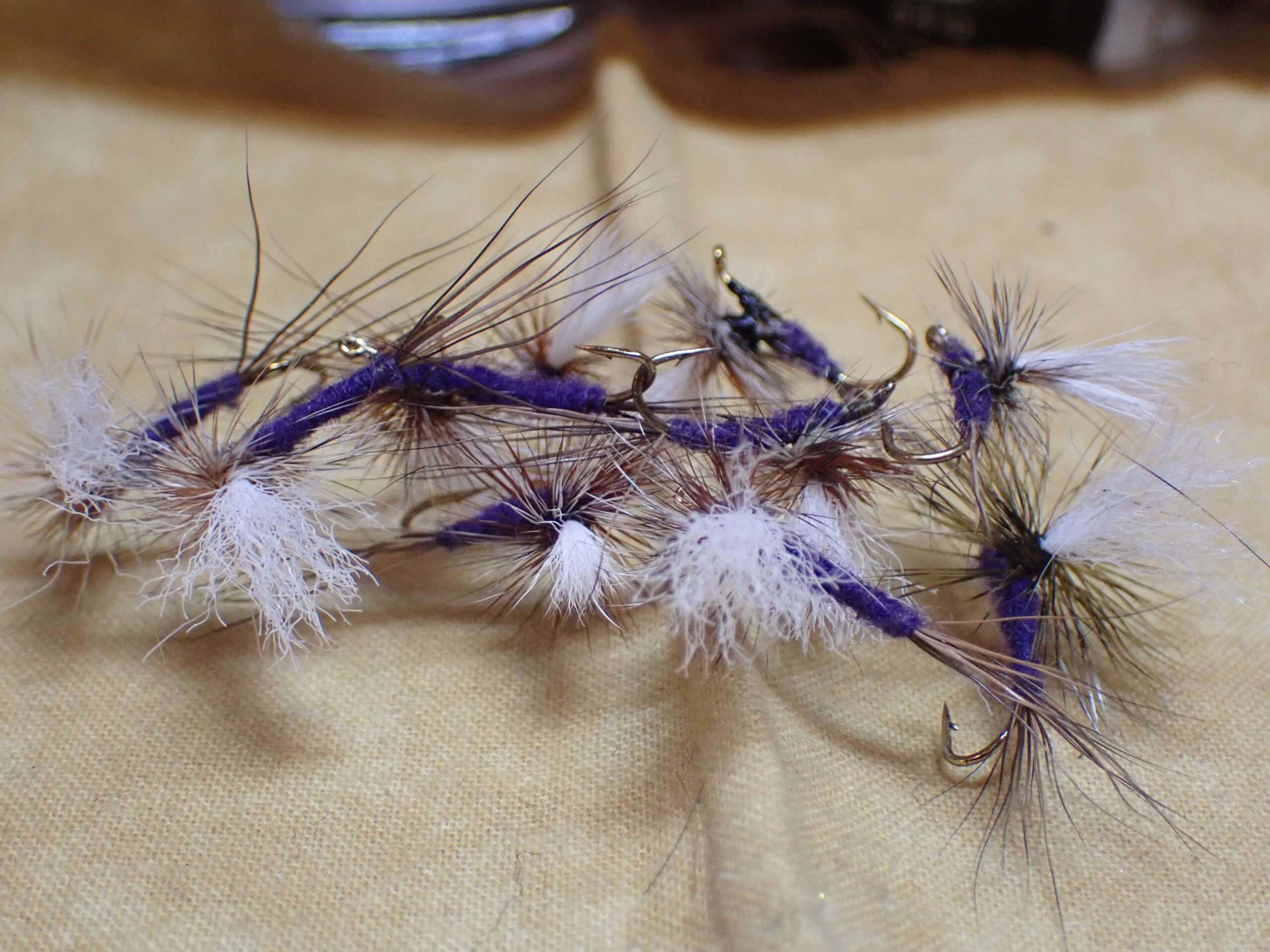 Flies from Storage
Flies from Storage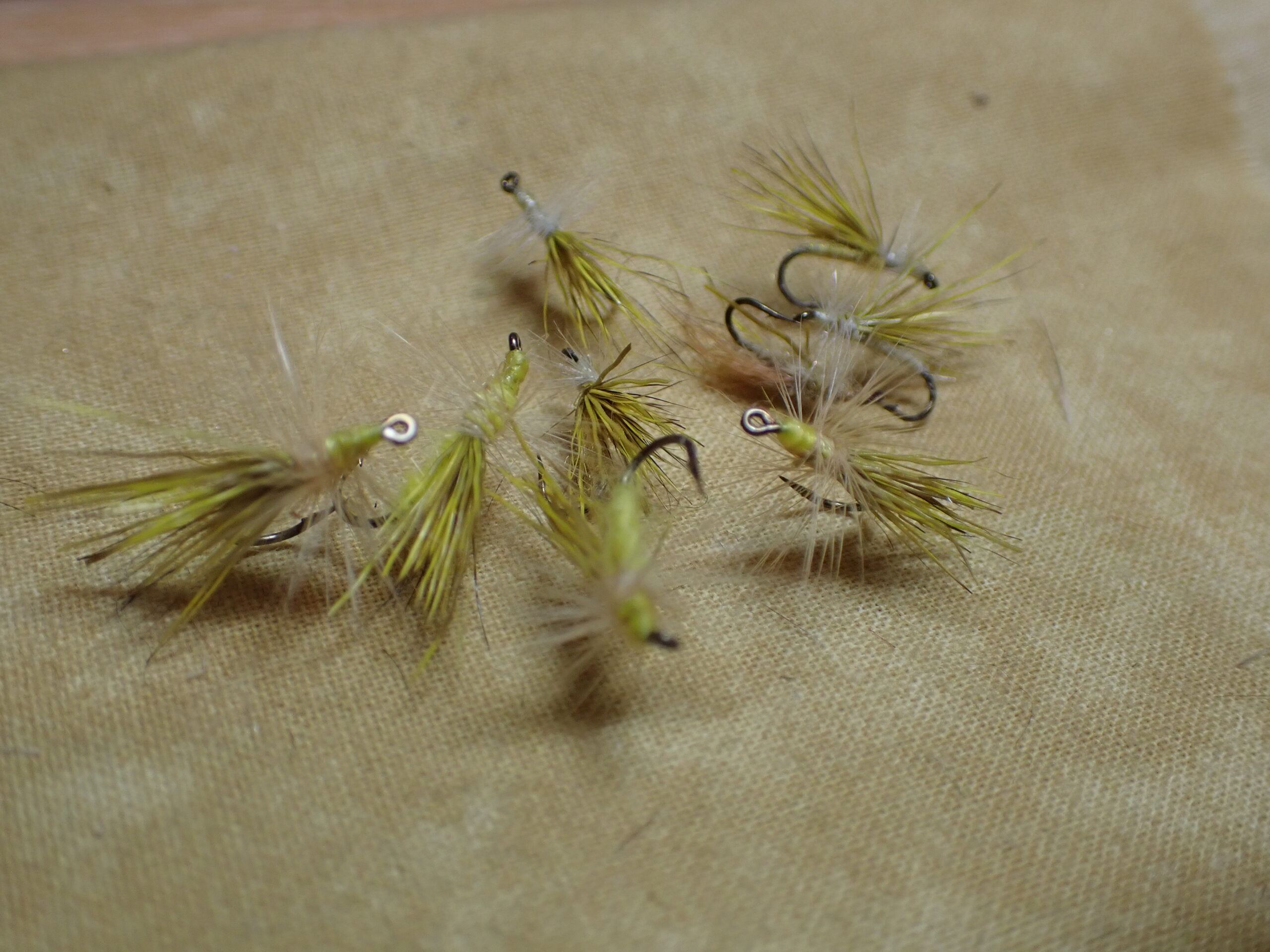 From My Storage Box
From My Storage Box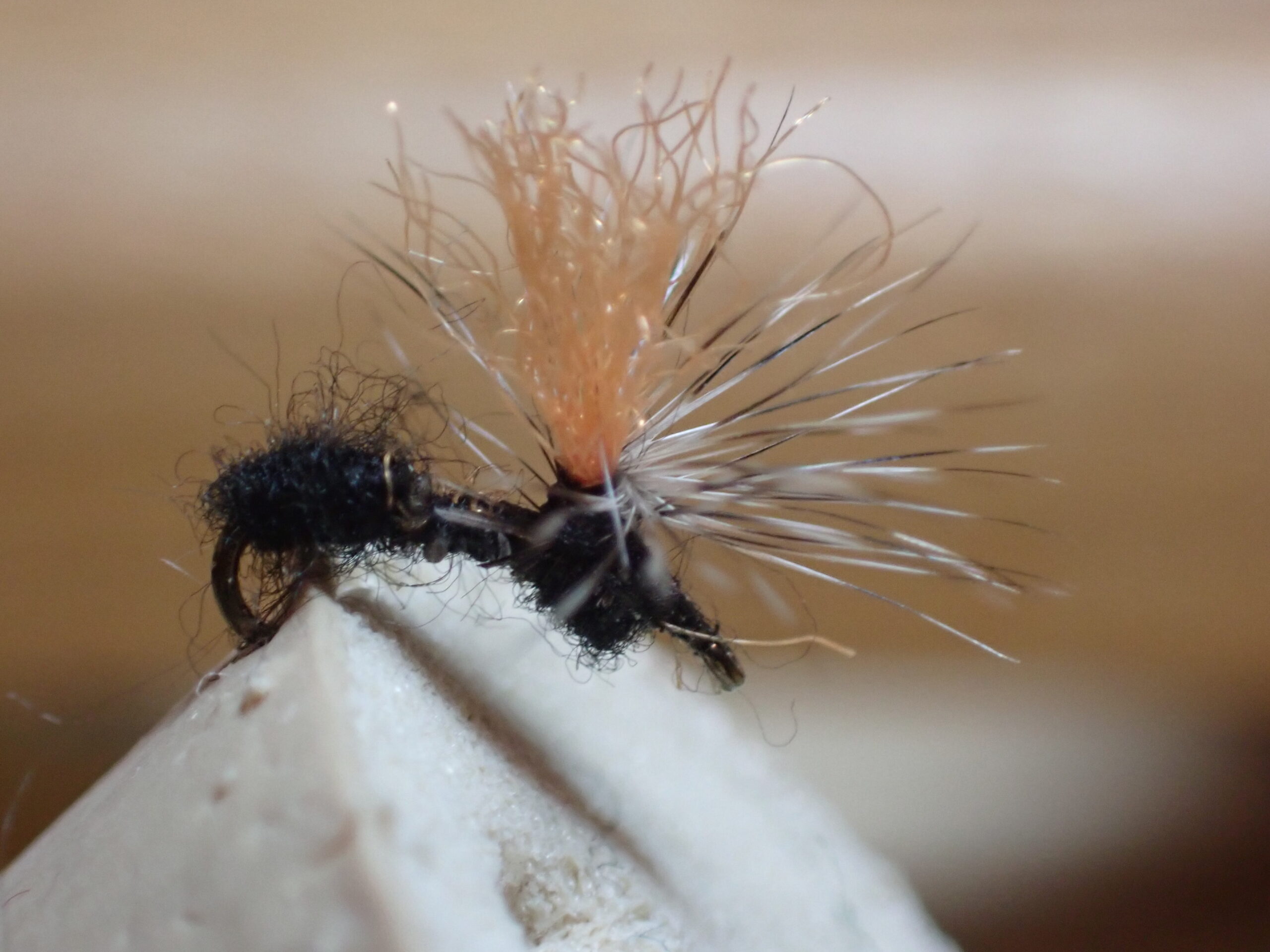 Narrow Waist Is Key
Narrow Waist Is Key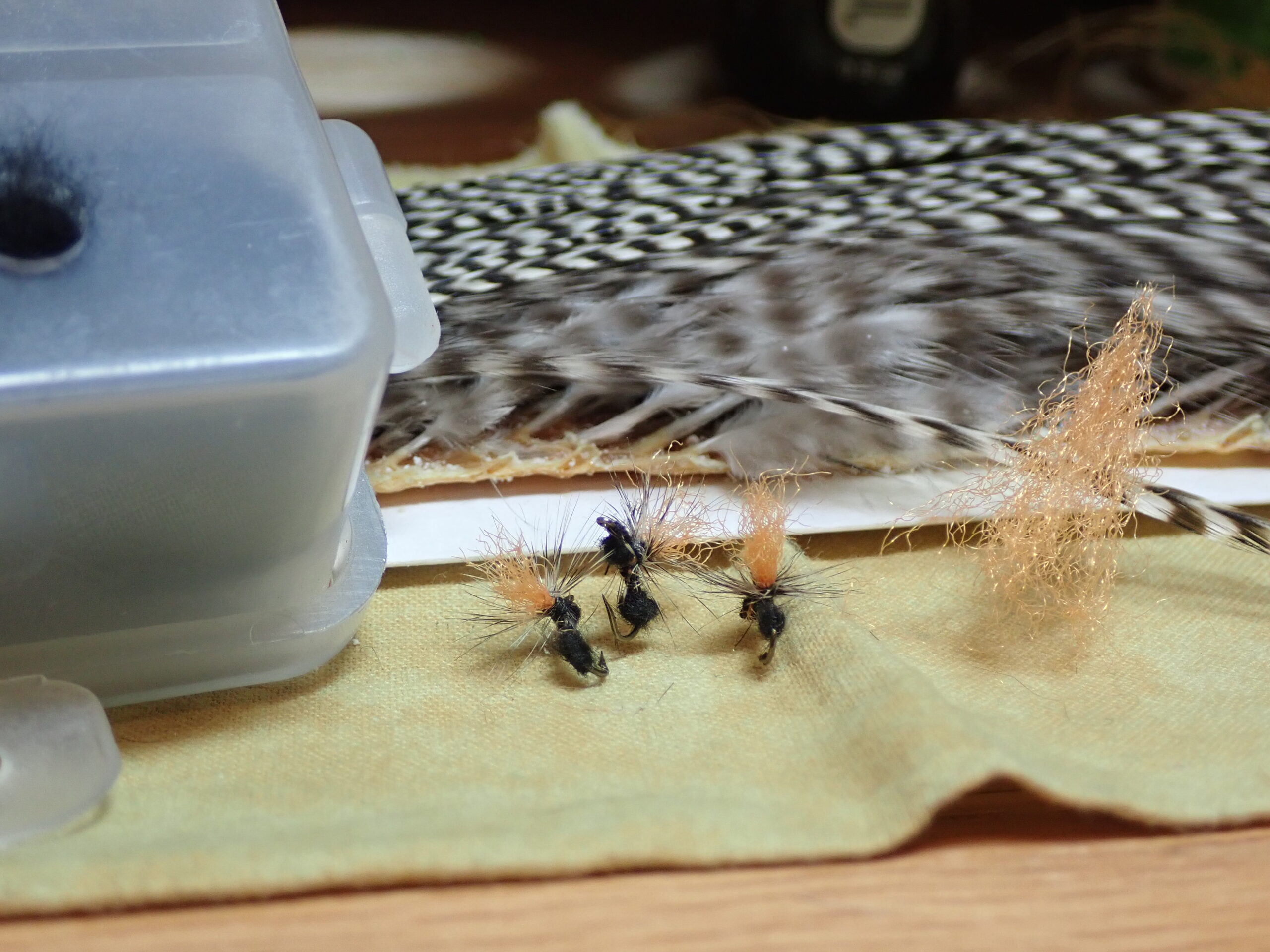 Materials and Three Size 18 Ants
Materials and Three Size 18 Ants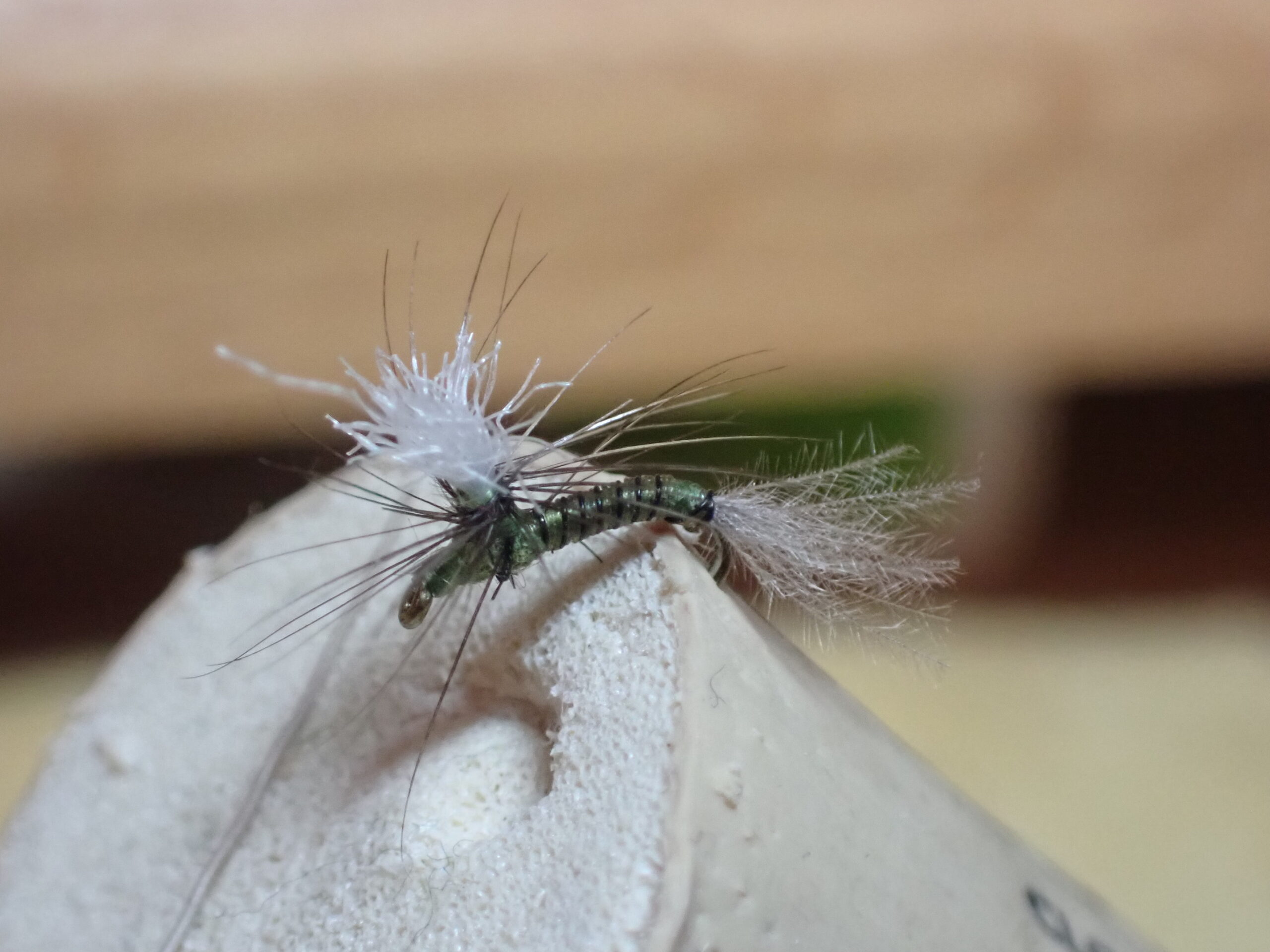 Visible White Wing Post Is Welcome for Tracking
Visible White Wing Post Is Welcome for Tracking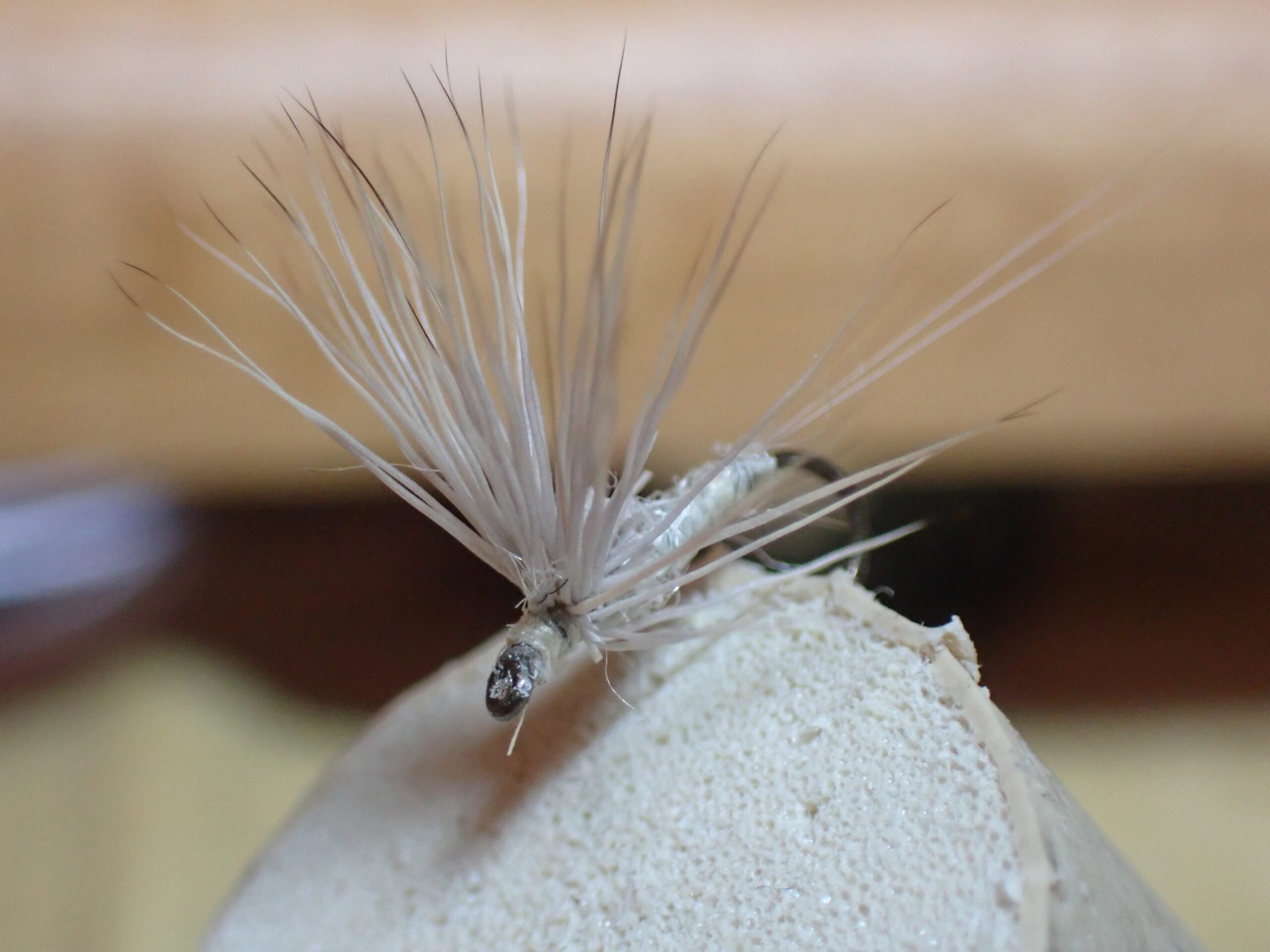 Nice Fan Wing Size 16 Light Gray Comparadun
Nice Fan Wing Size 16 Light Gray Comparadun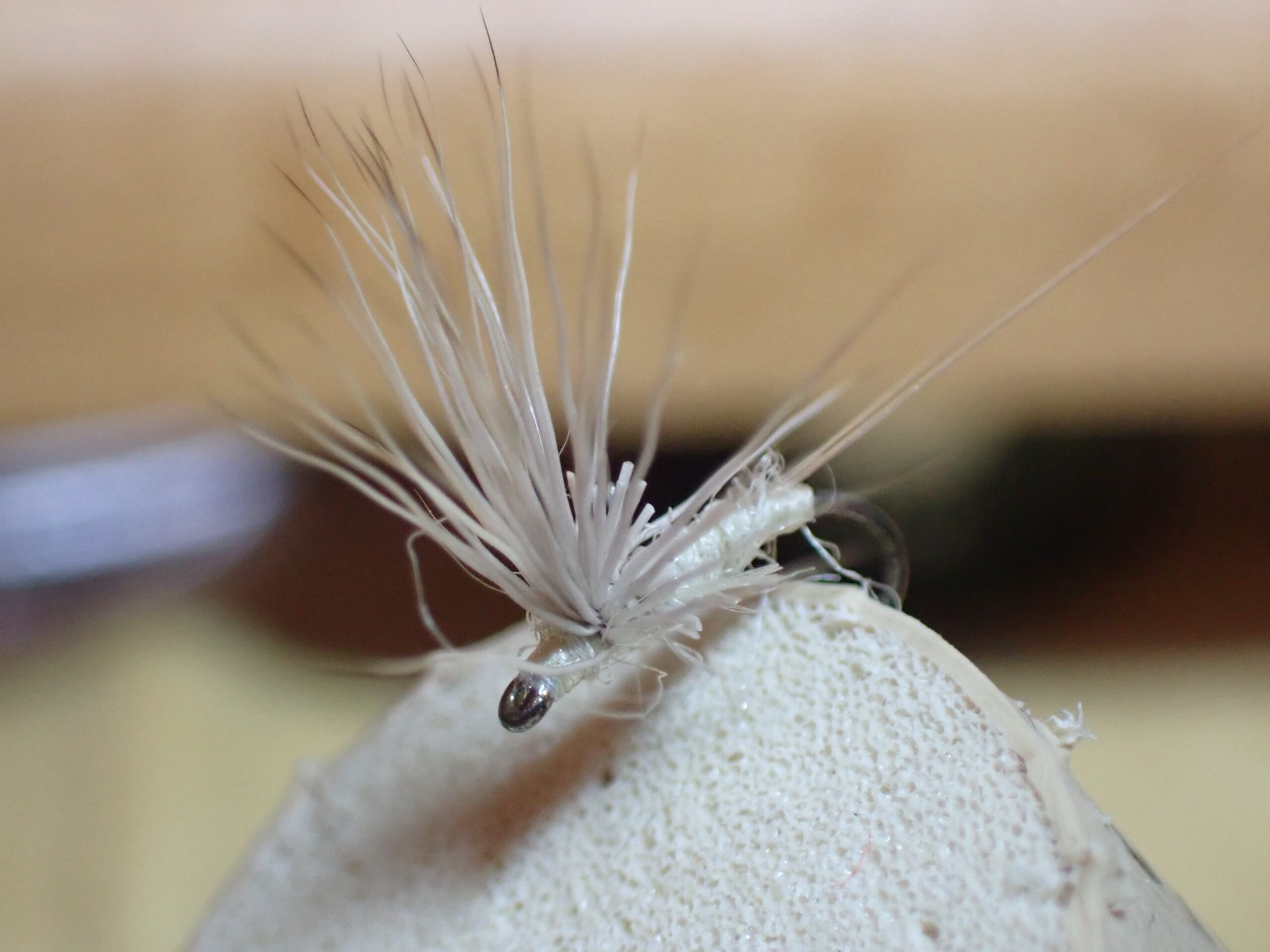 Size 18 Light Gray on a Refurbished Hook
Size 18 Light Gray on a Refurbished Hook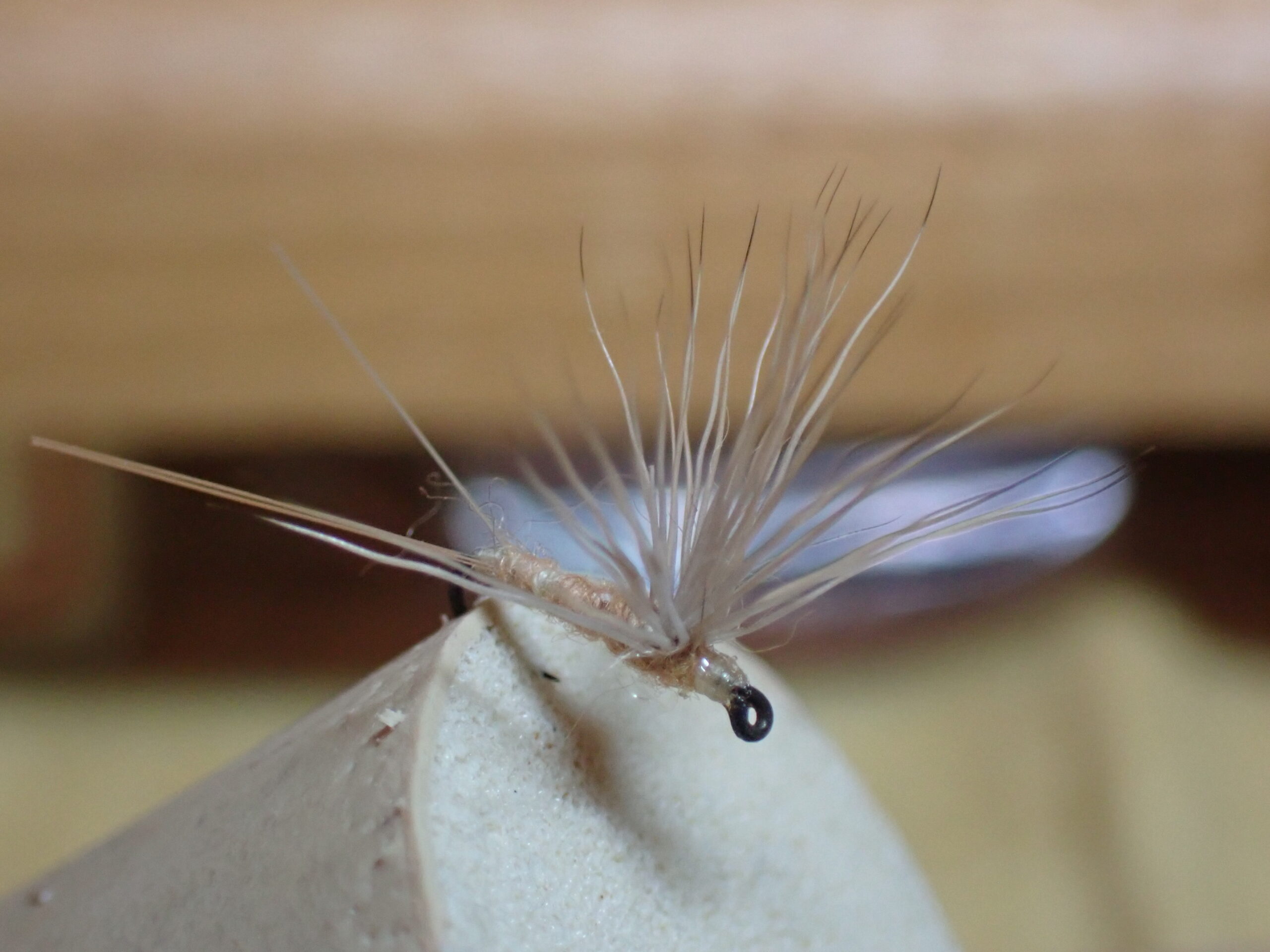 Size 18 Cinnamon Comparadun
Size 18 Cinnamon Comparadun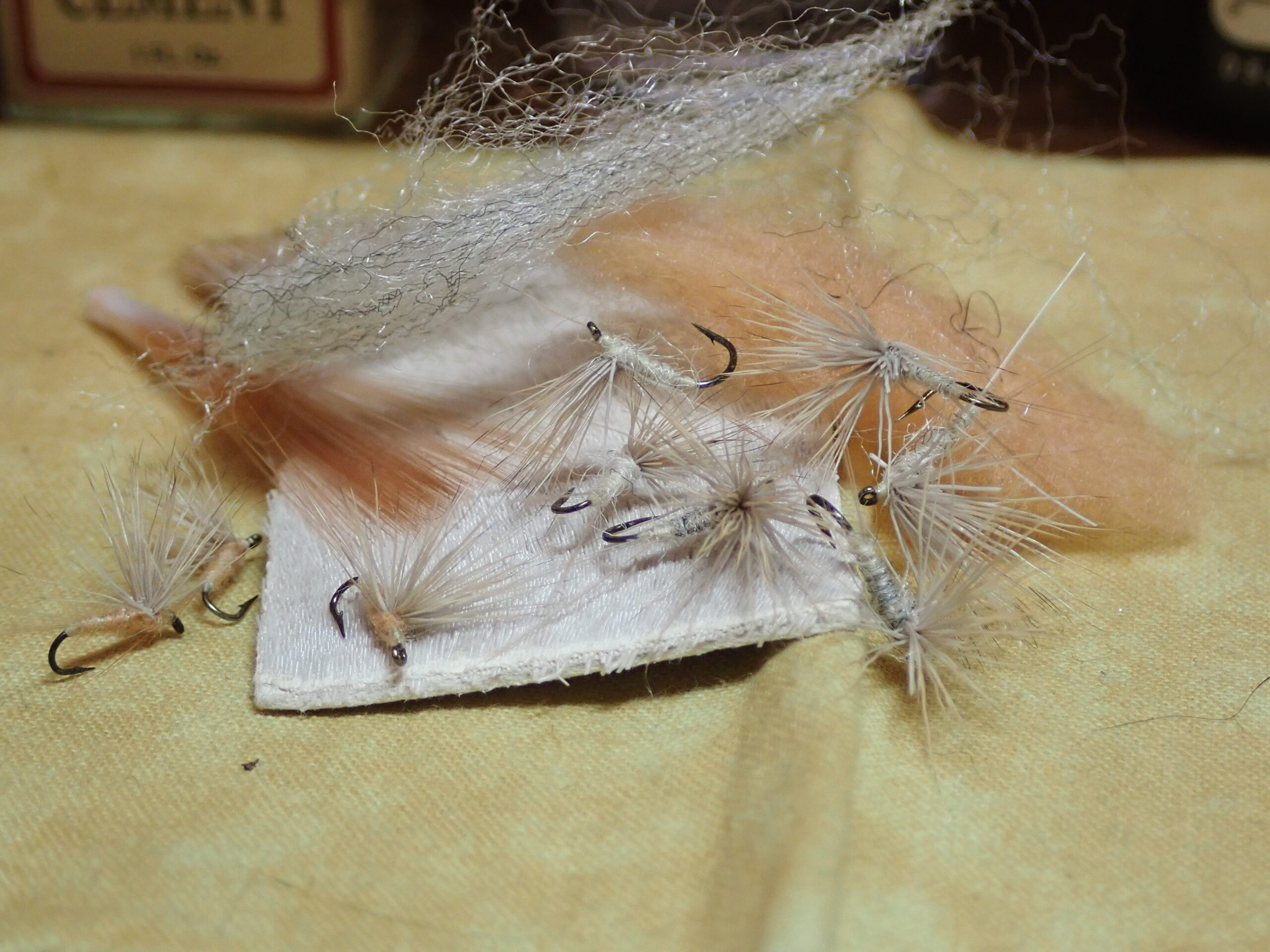 Nine New Comparaduns with Associated Materials
Nine New Comparaduns with Associated Materials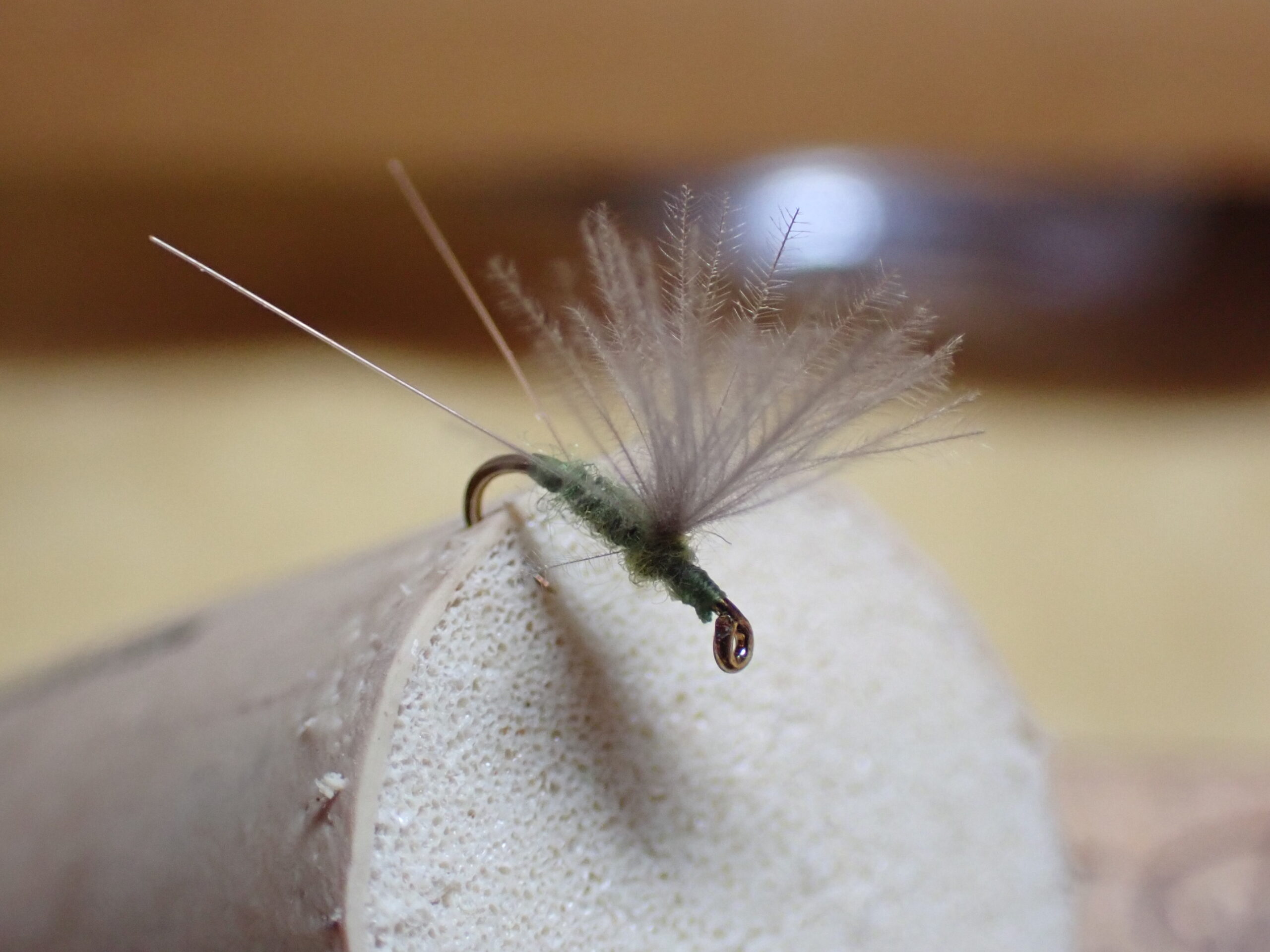 Size 20
Size 20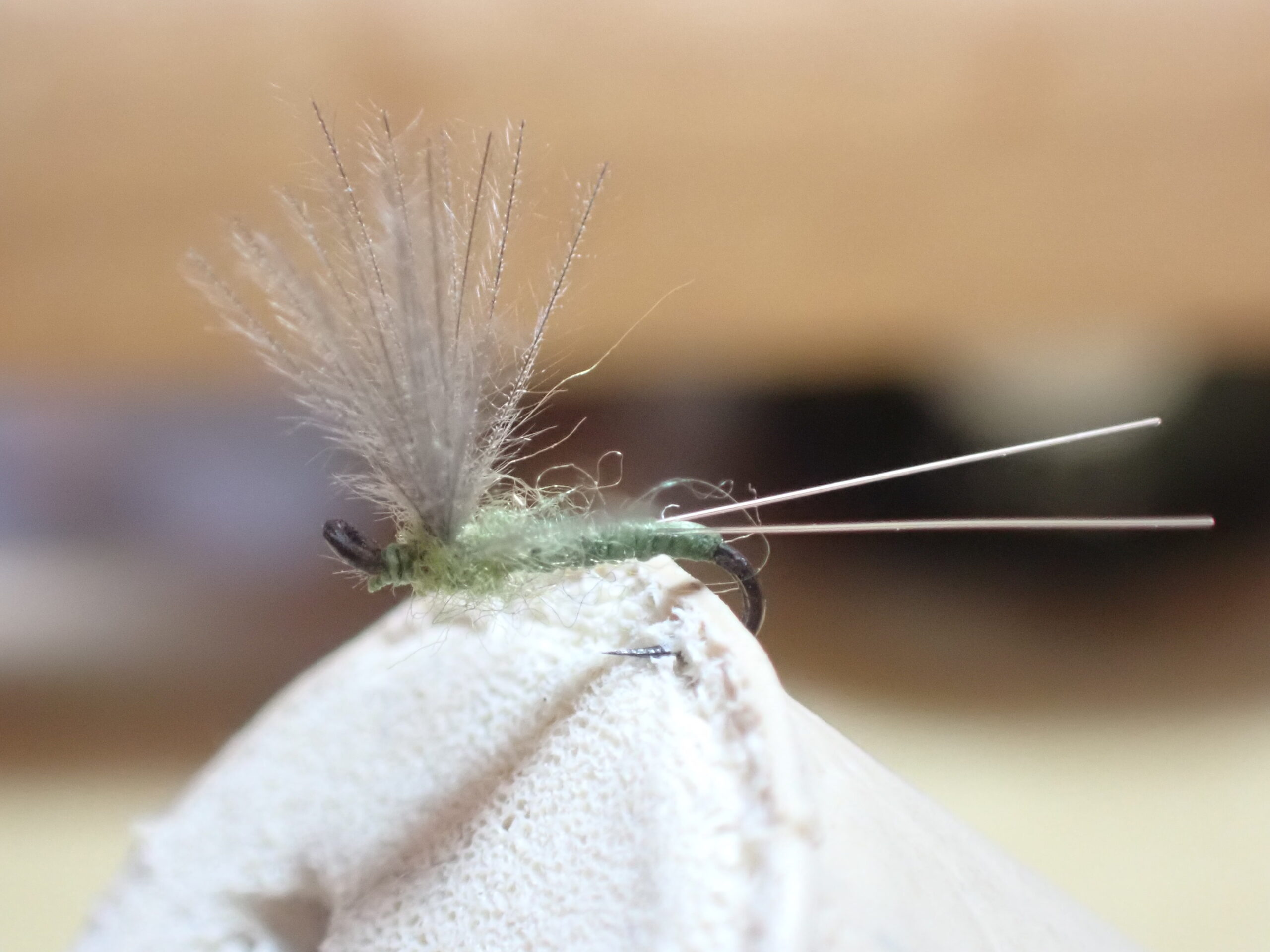 Minute Size 24
Minute Size 24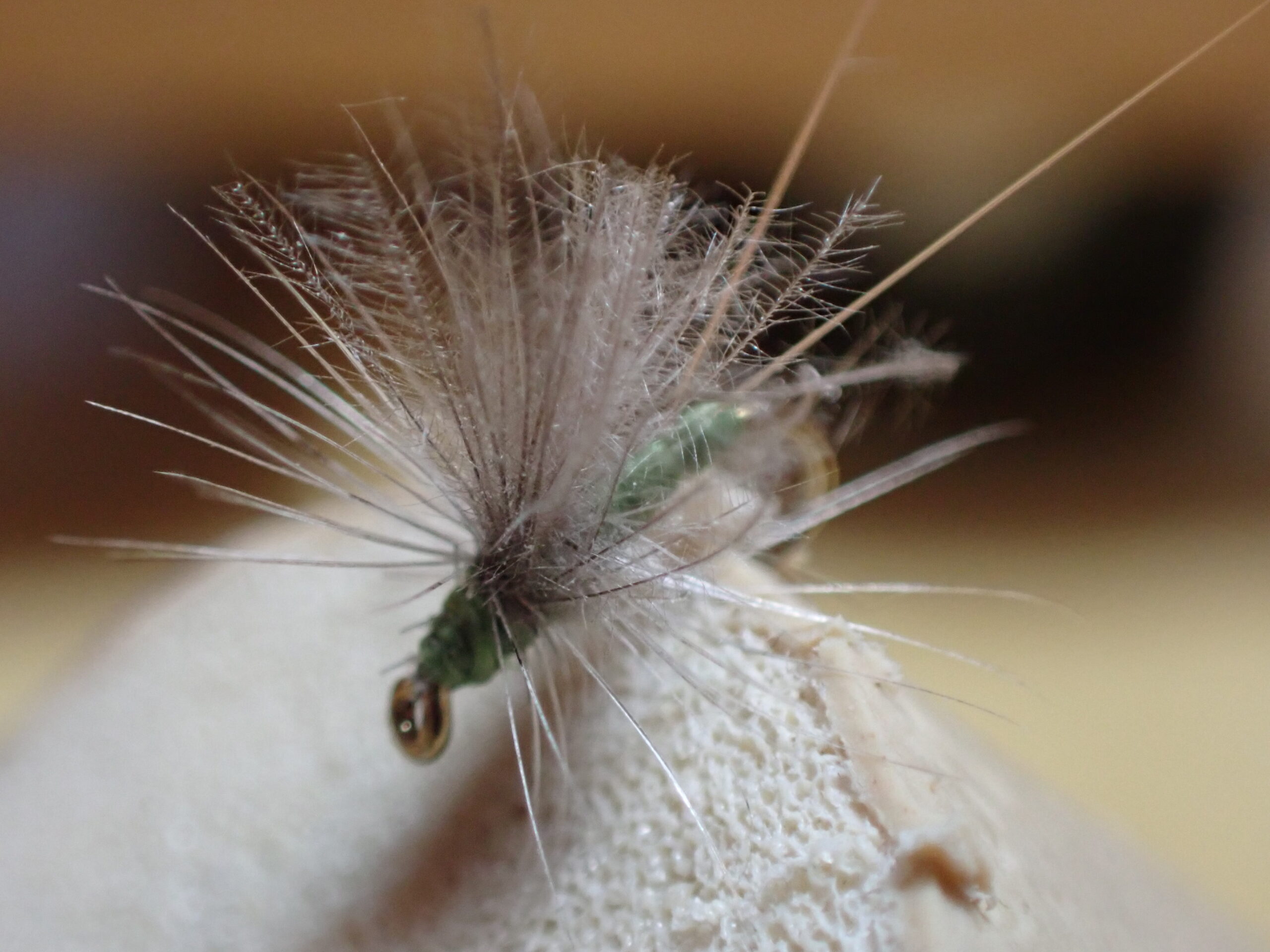 Hackled Variety
Hackled Variety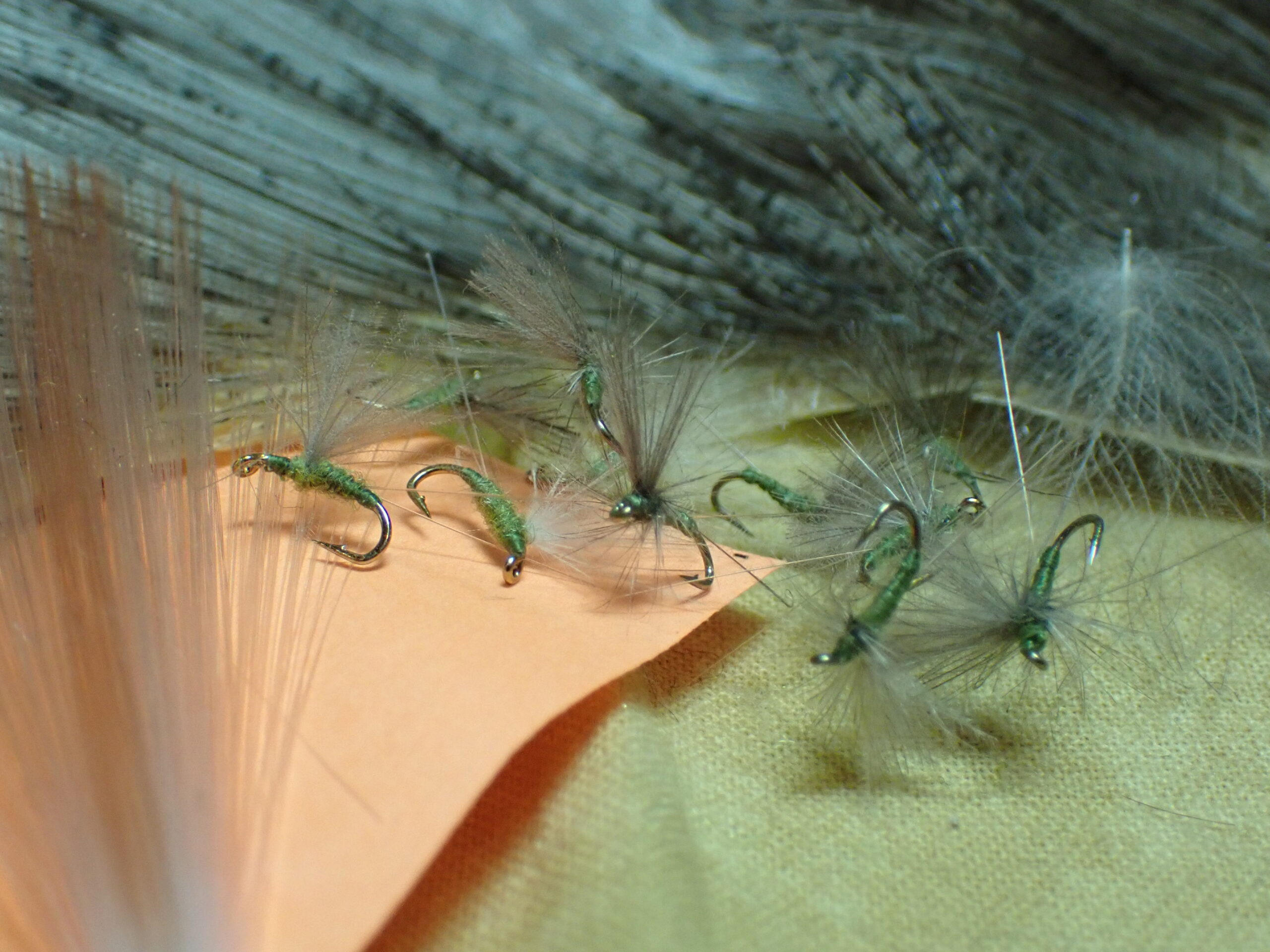 Eleven New CDC BWO Flies
Eleven New CDC BWO Flies